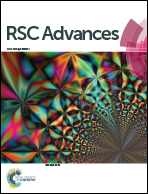Enhancement of dielectric constant of polyimide by doping with modified silicon dioxide@titanium carbide nanoparticles
Abstract
Electrode materials used in supercapacitors must have a high dielectric constant and a low dielectric loss along with good mechanical properties. In this study, the dielectric constant of polyimide (PI) was improved by preparing a PI/SiO2@TiC composite. A homogeneous dispersion of SiO2@TiC nanoparticles was obtained by the hydrolyzation of tetraethyl orthosilicate, which resulted in the formation of a thin layer of SiO2 on TiC particles. Polyamic acid was doped with the modified SiO2@TiC nanoparticles by mechanical blending to synthesize the PI/SiO2@TiC composite, and its dielectric properties were investigated. Scanning electron microscopy studies confirmed that the SiO2@TiC particles were homogeneously dispersed in the PI matrix and did not exhibit agglomeration. An increase in the SiO2@TiC filler content increased the dielectric constant and the dielectric loss of the composite, but decreased its breakdown strength and deteriorated its mechanical properties. Thus, the addition of SiO2@TiC particles to PI is suitable for improving its dielectric properties while maintaining its flexibility.



 Please wait while we load your content...
Please wait while we load your content...